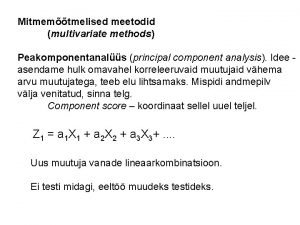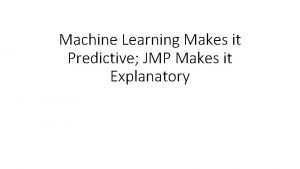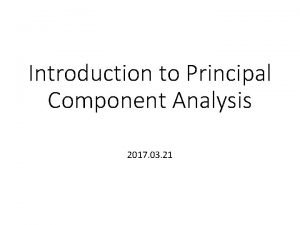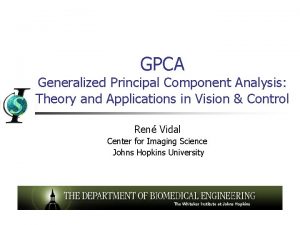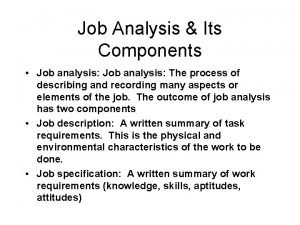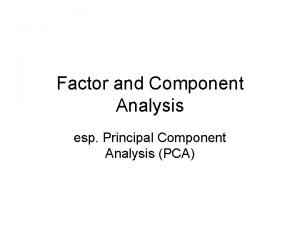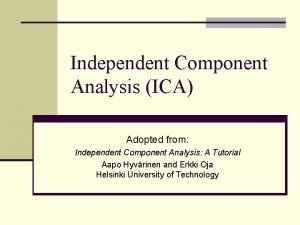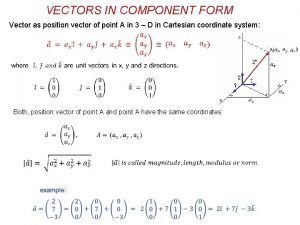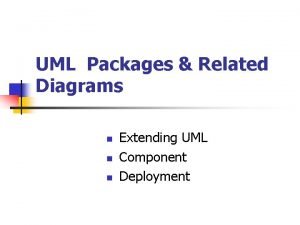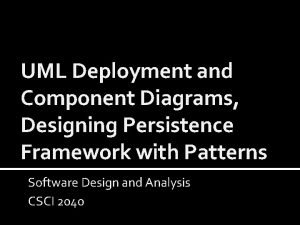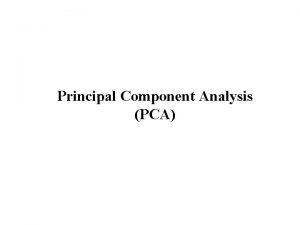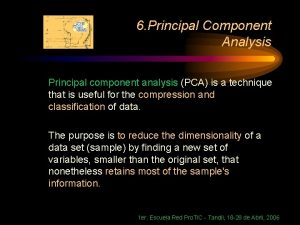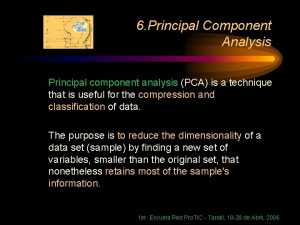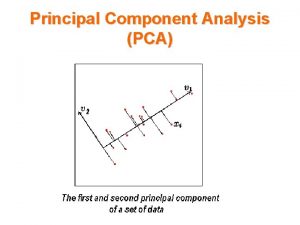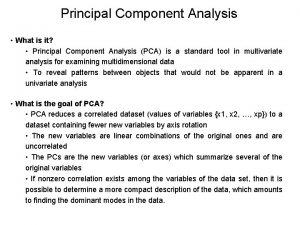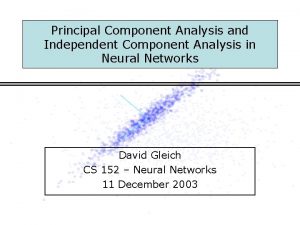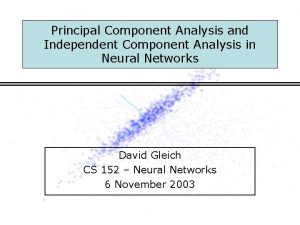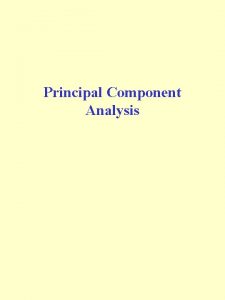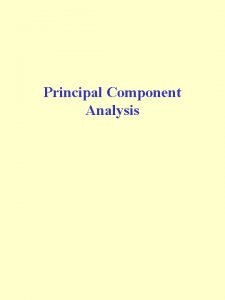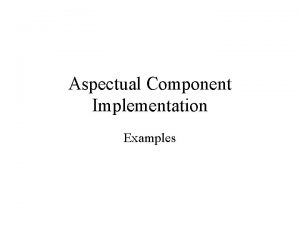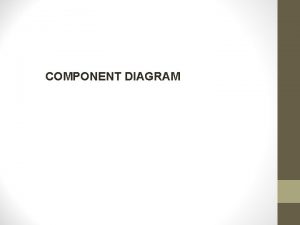Introduction to Principal Component Analysis 2017 03 21

















- Slides: 17

Introduction to Principal Component Analysis 2017. 03. 21

Why Factor or Component Analysis? • We study phenomena that can not be directly observed – Underlying factors that govern the observed data • We want to identify and operate with underlying latent factors rather than the observed data – E. g. topics in news articles • We want to discover and exploit hidden relationships – “beautiful car” and “gorgeous automobile” are closely related – But does your search engine know this? – Reduces noise and error in results

Why Factor or Component Analysis? • We have too many observations and dimensions – – – To reason about or obtain insights from To visualize Too much noise in the data Need to “reduce” them to a smaller set of factors Better representation of data without losing much information Can build more effective data analyses on the reduceddimensional space: classification, clustering, pattern recognition • Combinations of observed variables may be more effective bases for insights, even if physical meaning is obscure

Factor or Component Analysis • Discover a new set of factors/dimensions/axes against which to represent, describe or evaluate the data – – – For more effective reasoning, insights, or better visualization Reduce noise in the data Typically a smaller set of factors: dimension reduction Better representation of data without losing much information Can build more effective data analyses on the reduceddimensional space: classification, clustering, pattern recognition • Factors are combinations of observed variables – May be more effective bases for insights, even if physical meaning is obscure – Observed data are described in terms of these factors rather than in terms of original variables/dimensions

Basic Concept • Areas of variance in data are where items can be best discriminated and key underlying phenomena observed • Areas of greatest “signal” in the data • If two items or dimensions are highly correlated or dependent • They are likely to represent highly related phenomena • So we want to combine related variables, and focus on uncorrelated or independent ones, especially those along which the observations have high variance • We want a smaller set of variables that explain most of the variance in the original data, in more compact and insightful form

Basic Concept • What if the dependences and correlations are not so strong or direct? • And suppose you have 3 variables, or 4, or 5, or 10000? • Look for the phenomena underlying the observed covariance/codependence in a set of variables • Once again, phenomena that are uncorrelated or independent, and especially those along which the data show high variance • These phenomena are called “factors” or “principal components” or “independent components, ” depending on the methods used • Factor analysis: based on variance/correlation • Independent Component Analysis: based on independence

Principal Component Analysis • Most common form of factor analysis • The new variables/dimensions • Are linear combinations of the original ones • Are uncorrelated with one another • Orthogonal in original dimension space • Capture as much of the original variance in the data as possible • Are called Principal Components

• Principal Component Analysis (PCA) problem formulation

Original Variable B What are the new axes? PC 2 PC 1 Original Variable A • Orthogonal directions of greatest variance in data • Projections along PC 1 discriminate the data most along any one axis

Principal Components • First principal component is the direction of greatest variability (covariance) in the data • Second is the next orthogonal (uncorrelated) direction of greatest variability • So first remove all the variability along the first component, and then find the next direction of greatest variability • And so on …

Principal Components Analysis (PCA) • Principle • Linear projection method to reduce the number of parameters • Transfer a set of correlated variables into a new set of uncorrelated variables • Map the data into a space of lower dimensionality • Form of unsupervised learning • Properties • It can be viewed as a rotation of the existing axes to new positions in the space defined by original variables • New axes are orthogonal and represent the directions with maximum variability

Data preprocessing •

PCA algorithm •

Choosing k(number of PCA) •

Choosing k(number of PCA) •

Application of PCA Compression • Reduce memory/disk needed to store data, • Speed up learning algorithm Visualization

Bad use of PCA: To prevent overfitting •
 Parallel analysis spss
Parallel analysis spss Principal component analysis
Principal component analysis Jmp machine learning
Jmp machine learning Generalized principal component analysis
Generalized principal component analysis Principal component analysis
Principal component analysis Generalized principal component analysis
Generalized principal component analysis Component of job analysis
Component of job analysis Pca vs ica
Pca vs ica Cocktail party problem demo
Cocktail party problem demo Conclusion paragraph format
Conclusion paragraph format Components of sandwich
Components of sandwich Crosswind component chart
Crosswind component chart Component form of a vector
Component form of a vector Component commonality example
Component commonality example Piping components
Piping components On component hit
On component hit Deployment diagram for attendance management system
Deployment diagram for attendance management system Csci2040
Csci2040

